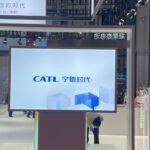The recent announcement of the fusion between Nissan and Honda marks the end of the Renault-Nissan Alliance that has been in place since 1999. While common structures like the jointly created purchasing company are dissolved, the relationship between the companies, along with Mitsubishi, continues through collaborative projects. Understanding the transition from the Alliance to project-based collaboration requires a deep dive into the dynamics of the relationship from its inception to the crisis it faced.
The Renault-Nissan strategic alliance was initially built on principles of complementarity, relational capital, and learning dynamics. While the companies had some geographical and operational complementarities, the alliance was primarily formed due to Nissan’s financial struggles and Renault’s willingness to take a risk. Over the years, the partners learned from each other, but the crisis in 2018 exposed the fragility of their relationship. Despite this, the alliance survived, with Mitsubishi joining as a third partner.
To better understand the Renault-Nissan dynamic, alternative theoretical frameworks from interpersonal relationship theory and project management were explored. The partnership was seen as an ongoing project of projects, with joint initiatives forming the basis of their collaboration. The 2018 crisis strained the alliance due to divergent priorities, but a return to focusing on joint projects, particularly in electric vehicle development, helped restore momentum.
The Renault-Nissan case provides insights into strategic alliances and project management, highlighting the emergence of complementarities through projects, the future-focused nature of relational capital, and the interplay between infinite and finite projects. This framework can be applied beyond corporate alliances to interpersonal relationships, viewing them as “projects of projects” dependent on shared goals and mutual perceptions of fairness.
While the Renault-Nissan Alliance has ended in its institutional form, the relationship between Renault and Nissan continues through time-limited projects. The future of this collaboration remains uncertain, with potential scenarios of increased engagement with other automotive companies or the maintenance of joint initiatives. Observing the dynamics of this relationship will provide valuable insights into the evolution of strategic partnerships in the automotive industry.
This article was written by Magali Ayache, Maître de Conférences en Sciences de Gestion at CY Cergy Paris Université, and Hervé Dumez, Vice-Président recherche d’Euram and Professor at École polytechnique. It was originally published on The Conversation under a Creative Commons license.







